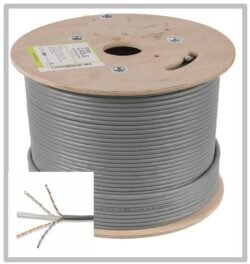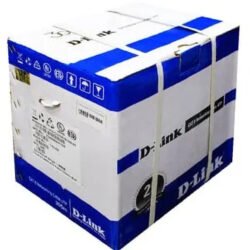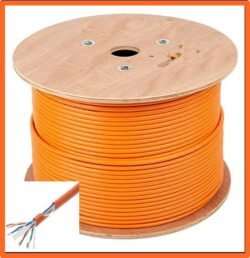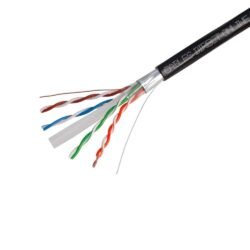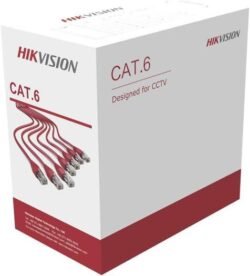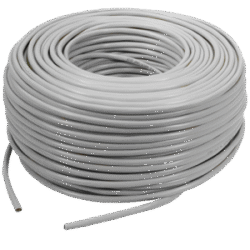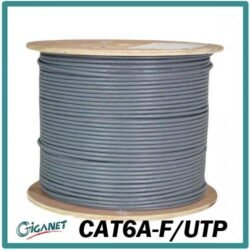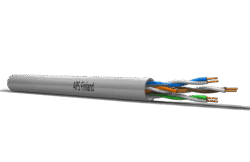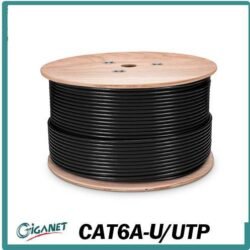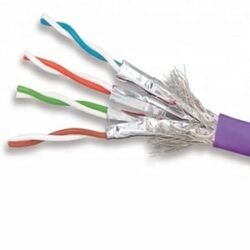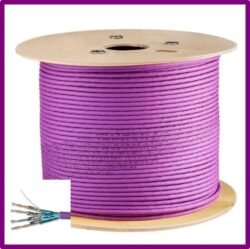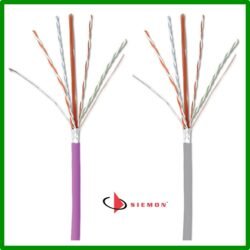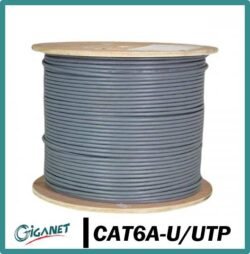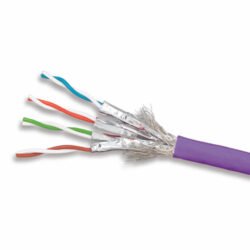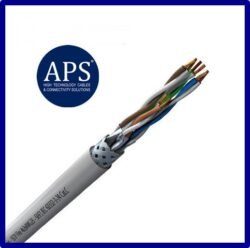In 2025, while wireless technologies like Wi-Fi 6 and 7 push the boundaries of convenience, Ethernet cabling remains the undisputed champion for speed, reliability, and security. In structured cabling applications in Kenya. Whether you’re a student streaming lectures, a remote worker on a critical video call, or a competitive gamer, a wired connection is the smart choice. Ethernet cables are not only affordable but also widely available across the country, making them a foundational component of any high-performance network.
The Ultimate Guide to Ethernet Cables in Kenya
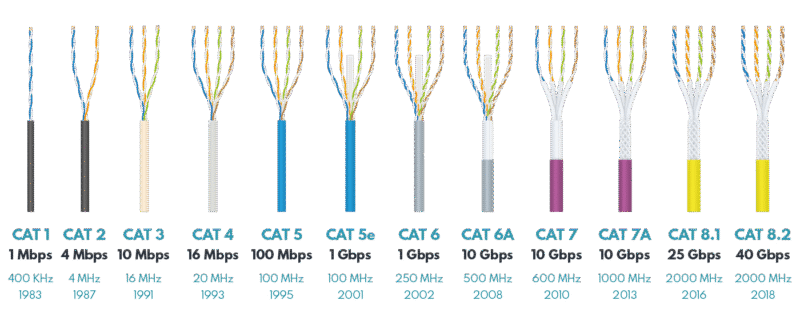
What is an Ethernet Cable
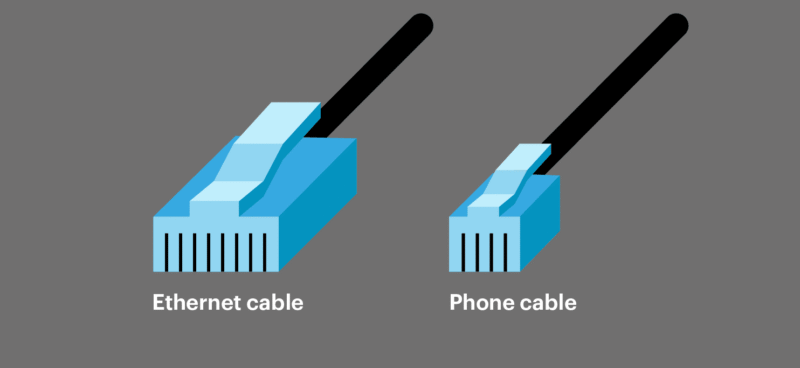
An Ethernet cable is a physical medium used to connect electronic devices such as computers, routers, switches, and modems to form a network. Unlike wireless connections, Ethernet cables use twisted pairs of copper wires to transmit data signals with minimal interference. This structure allows Ethernet connections to deliver higher speeds, more secure data transmission, and greater reliability compared to WiFi networks, which are subject to signal dropouts and interference from walls or other devices.
Ethernet cables serve as the backbone of Local Area Networks (LANs) in homes, offices, schools, and enterprises. The cable physically links devices, creating a direct path for data, which is why it boasts faster transmission rates and lower latency. This makes Ethernet ideal for situations where speed and connection stability are paramount, such as in gaming, streaming high-definition videos, video calls, and business environments requiring file sharing or cloud access.
Wired vs Wireless: Ethernet Cables vs WiFi in Kenya – Which is Better for Your Home or Business
While both Ethernet cables and WiFi deliver internet connectivity, the biggest difference lies in performance and reliability. Ethernet, being a wired solution, provides dedicated bandwidth with minimal interference, making it far superior for data-heavy tasks such as video conferencing, online gaming, and powering PoE devices like IP phones and CCTV cameras.
WiFi, on the other hand, relies on radio signals which can be disrupted by walls, distance, and competing networks, leading to fluctuating speeds and higher latency. Security is also stronger on Ethernet since access requires a physical connection, whereas WiFi networks, if not properly encrypted, can be vulnerable to unauthorized access.
For Kenyan businesses handling sensitive data or requiring 24/7 uptime, Ethernet offers unmatched stability, while WiFi remains ideal for homes and mobile users who value flexibility over raw performance.
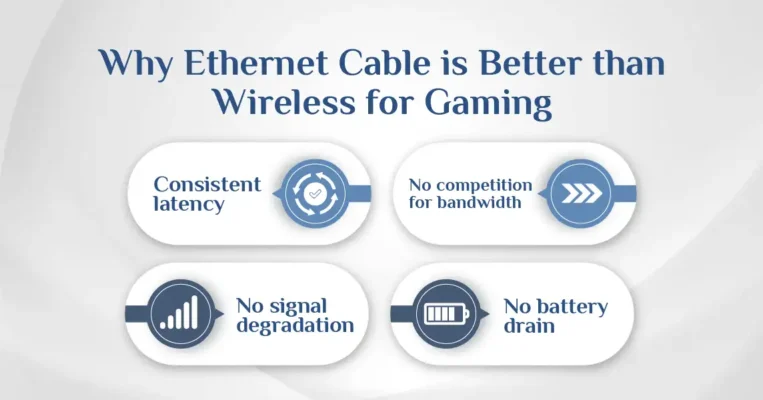
Why Ethernet Reigns Supreme Over Wi-Fi
The debate between wired and wireless connectivity isn’t just about convenience; it’s about performance and physics. While Wi-Fi offers unparalleled mobility, its signal is susceptible to a host of interferences that can degrade your connection.
Dedicated Connection: An Ethernet cable creates a direct, physical link between your device and the network. There’s no signal to get lost or slowed down by obstacles like walls, doors, or furniture—a common problem in multi-story Kenyan homes and offices.
Lower Latency: Latency, the time it takes for data to travel from its source to its destination, is critical for real-time applications. Wi-Fi’s shared radio frequency introduces minor delays, or “lag,” that are imperceptible during casual browsing but are deal-breakers for online gaming and high-quality video conferencing. Ethernet’s direct path virtually eliminates this delay, giving you a smooth, responsive experience.
Enhanced Security: Wired connections are inherently more secure than wireless ones. With Wi-Fi, there’s a risk of unauthorized access or signal interception. A physical Ethernet cable is a closed system, making it far more difficult for malicious actors to tap into your network. This is a significant consideration for businesses handling sensitive client data.
Addressing Local Challenges: In Kenya, our unique challenges make Ethernet even more valuable. In urban centers like Nairobi and Mombasa, the sheer density of Wi-Fi networks can lead to channel congestion and signal degradation.
By using an Ethernet cable, you bypass this wireless “traffic jam,” ensuring a consistently fast connection. Furthermore, for businesses and households that need consistent bandwidth, like those in the fintech or creative industries, Ethernet provides the backbone for reliable file transfers and cloud access.
The Definitive Guide to Ethernet Cable Categories
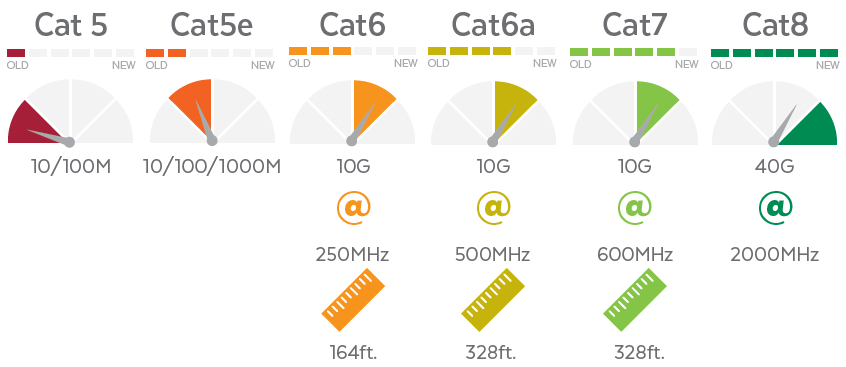
Ethernet cables are categorized based on their performance capabilities, a designation known as the “Category” or “Cat” number. The higher the number, the more robust the cable’s performance in terms of speed and bandwidth. Understanding these differences is key to choosing the right cable for your needs.
Cat5e (Category 5 Enhanced)
- Speed & Bandwidth: Supports speeds up to 1 Gbps (Gigabit per second) and a bandwidth of 100 MHz.
- Use Case: While considered a budget-friendly and older standard, it’s still suitable for basic home internet needs, office networks with low data transfer demands, and connecting devices like printers or smart TVs. It’s ideal for those with internet speeds under 1 Gbps.
Cat6 (Category 6)
- Speed & Bandwidth: The current industry standard. It can handle speeds of up to 10 Gbps over short distances (up to 55 meters) and provides a bandwidth of 250 MHz.
- Technical Leap: The Cat6 cable features more tightly twisted pairs of copper wires, which significantly reduces crosstalk—the interference between neighboring wire pairs. This allows for higher data transfer rates and more reliable performance compared to Cat5e. For most homes and small businesses in Kenya, Cat6 provides an exceptional balance of price and performance, making it the most popular choice.
Cat6a (Augmented Category 6)
- Speed & Bandwidth: An enhanced version of Cat6, it is specifically designed to deliver a stable 10 Gbps connection over much longer distances, up to 100 meters. It boasts a higher bandwidth of 500 MHz.
- Use Case: Cat6a is the go-to for medium to large-scale businesses, data centers, and advanced users who require consistent performance over longer runs. Its superior shielding helps it thrive in environments with more electromagnetic interference (EMI), such as near power lines or heavy machinery.
Cat7 & Cat8
- Cat7: A premium cable, Cat7 is primarily used in data centers. It offers advanced shielding and supports speeds above 10 Gbps. However, it is not an official TIA/EIA standard, and for most home or office applications, Cat6a offers similar performance for a lower cost.
- Cat8: Designed for ultra-high-speed data center applications, Cat8 cables support speeds of 25 Gbps or 40 Gbps but only over very short distances (up to 30 meters). They are overkill for typical home and business networks and are not commonly available in the general Kenyan market.
Cat 6 Ethernet Lan Cables
Cat 6A Ethernet Lan Cables
Cat 7 Ethernet Cables
Practical Ethernet Cables Application & Installation in Kenya
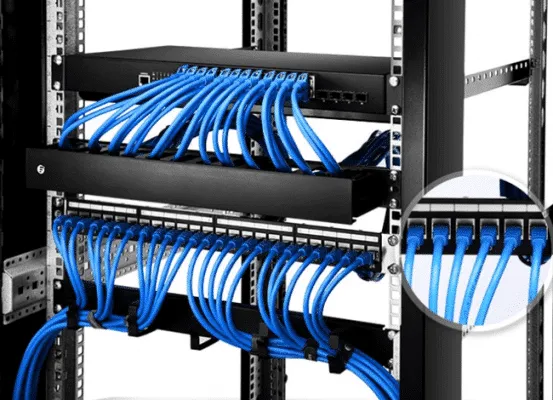
In Kenya, Ethernet cables like Cat5e, Cat6, and Cat7 are widely used for reliable, high-speed network connections in homes, businesses, and industrial environments. Practical applications include connecting modems, routers, computers, CCTV systems, and VoIP phones, as well as providing backbone infrastructure in office buildings, data centers, and outdoor settings.
- Ethernet cables are essential for fast file transfers, internet connectivity, video conferencing, cloud computing, and IoT devices in homes and workplaces across Kenya.
- Cat6 cables, for example, support Gigabit Ethernet speeds and are commonly used in LAN setups, CCTV installations, and voice communication systems.
- More robust cables such as Cat7 are chosen for industrial settings due to their shielding and resistance to environmental hazards like moisture, UV exposure, and chemicals.
- Networking faceplates and cable management accessories are used to organize and protect cable layouts in offices and server rooms.
Installation Practices in Kenya
- Installation typically involves site surveys and network planning to optimize cable routes, switch placement, and cable types (e.g., Cat6 or Cat6a).
- Technicians install cables through walls, ceilings, or conduits for safety, aesthetics, and performance.
- Outdoor installations use specially rated cables like Siemon Cat6 UTP with PE insulation and FR PVC jackets to withstand weather and mechanical stress.
- Proper cable management is applied to maintain airflow in equipment areas and minimize risks such as overheating.
- Local suppliers and installers provide network cabling solutions with adherence to global standards and tailored to Kenyan environments.
DIY- You can Make and Terminate Your Own Ethernet Cable for home or Office use;
Making your own Ethernet cables offers cost savings and custom lengths. The process includes gathering tools like a crimping tool, cable stripper, RJ45 connectors, and a tester.
Start by cutting the cable to length and stripping about 1 to 1.5 inches of the jacket to expose the wires. Next, untwist and arrange the wires in the T568B standard order common in Kenya. Insert the wires into the RJ45 connector with the cable jacket inside for strain relief. Crimp the connector securely, then test the cable for proper wiring and connectivity to ensure reliable performance.
This step-by-step guide covers preparation, wire arrangement, crimping, and testing essential for creating functional Ethernet cables tailored to specific needs
Advanced Ethernet Applications for business of cabling
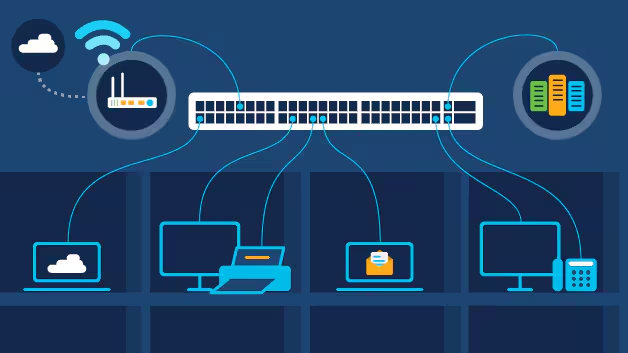
For businesses and professionals, Ethernet cabling goes beyond basic connectivity. Understanding advanced concepts can lead to more efficient and cost-effective network infrastructure.
Power over Ethernet (PoE) in Kenya
PoE is a technology that delivers both data and electrical power over a single Ethernet cable. This is a game-changer for devices like IP phones, security cameras, and wireless access points. In Kenya, where simplifying wiring is often a priority, PoE saves time and money on installation. The two primary standards are:
- IEEE 802.3af (PoE): Provides up to 15.4 watts of power per port, suitable for most basic security cameras and IP phones.
- IEEE 802.3at (PoE+): Provides up to 30 watts, supporting more power-hungry devices like pan-tilt-zoom cameras or high-performance Wi-Fi 6 access points.
Jacket Ratings: CMP vs. CMR
Cable jacket ratings are about fire safety and compliance. In Kenya, where building codes are a growing concern, understanding these ratings is vital for any professional installation.
- CMR (Riser-rated): This is the most common rating for in-wall cabling. It prevents fire from spreading between floors via vertical cable runs.
- CMP (Plenum-rated): Plenum-rated cables are made from materials that produce minimal smoke and toxic fumes when burned. They are legally required for installation in air-handling spaces like above drop ceilings or in air ducts in many commercial buildings. While more expensive, they are a necessary investment for safety and compliance.
Extending Ethernet Beyond 100 Meters
When a single 100-meter run isn’t enough, you have a few options:
- Ethernet Switches/Repeaters: The most common solution is to install an Ethernet switch or repeater. These devices regenerate the signal, allowing you to extend the network another 100 meters.
- Fiber Optic Cables: For runs over several hundred meters, or for connecting separate buildings on a large campus, fiber optic cables are the ultimate solution. They transmit data using light pulses and can carry signals over vast distances without any signal loss.
- PoE Extenders: For PoE-powered devices like security cameras, a PoE extender can boost both the data and power signals, allowing you to place cameras further from the network switch.
Solid vs. Stranded Cables
- Solid-core cables consist of a single, thick copper wire per conductor. They are ideal for long-distance, in-wall installations where the cable won’t be moved often.
- Stranded-core cables are made up of multiple thin wires twisted together. They are much more flexible and are best used for short patch cables that connect devices to wall jacks, as they can withstand frequent bending without breaking.
Troubleshooting Common Ethernet Cable Issues
When your connection goes down, it’s often the cable. Here are the most common issues and how to fix them:
-
- No Connection: Check both ends of the cable. Are they securely plugged in?
- Loose Connectors: Over time, the locking tabs on RJ45 connectors can break. If a cable keeps falling out of a port, it’s time to replace it.
- Physical Damage: Inspect the cable for visible cuts, kinks, or sharp bends. This can sever the internal wires.
- Cable Length: Remember the 100-meter rule for standard Ethernet. Beyond this distance, you’ll experience significant signal loss.
Guide to Ethernet Cable Pricing in Kenya
The Kenyan market offers a wide variety of Ethernet cables and accessories. Mainly Cat6 and Cat6a and Cat7 indoor and outdoor Cables. The cables come Bulk rolls Usually 305 and 500m Rolls. Patch cables usually from (0.25 meter, 0.5 Meter to 10m Patch Cables
General estimate Ethernet Cable Pricing guide in Kenya ; Prices vary significantly based on the cable category, length, and brand.
| Cable Type | Price Range (per meter) | Common Use |
| Cat5e | KSh 50 – 80 | Basic Home Use |
| Cat6 | KSh 80 – 120 | Standard Home & Small Office |
| Cat6a | KSh 120 – 200 | Business Networks & CCTV |
| Cat7 | KSh 200+ | Data Centers & Specialized Use |
Bulk rolls of 305 meters are the most cost-effective option for large-scale projects. A quality Cat6 bulk roll from a reputable brand like D-Link or Giganet can cost between KSh 14,000 and KSh 18,000. Shielded and outdoor-rated cables will be on the higher end of the price spectrum.
Essential Networking Tools & Accessories
A professional installation requires more than just a cable. Key tools and accessories include;
- Crimping Tools: For attaching RJ45 connectors to cables.
- Cable Testers: A vital tool for verifying cable integrity and pinout.
- Keystone Jacks & Patch Panels: For a clean, modular, and organized network setup.
- Cable Strippers: For precise removal of the cable jacket.
Buying guide for cables in Kenya Brands and types.
When buying, look for trusted suppliers who offer a wide range of certified products. Reputable brands like Giganet, Siemon D-Link, and Hikvision are widely available and are known for their quality. Always opt for pure copper cables over cheaper Copper Clad Aluminum (CCA) variants, as pure copper offers superior performance and is less prone to breaking. Ethernet remains a vital and powerful networking solution, offering a level of speed, stability, and security that wireless simply cannot match. By understanding the different cable categories, installation best practices, and the pricing landscape in Kenya, you can build a robust network that will serve your needs for years to come.
Frequently Asked Questions
What’s the cheapest Ethernet cable I can buy in Kenya?
Cat5e is the most affordable option, typically priced at KSh 50-80 per meter. It’s perfect for basic home use and speeds up to 1 Gbps.
Is a Cat6 cable worth it for a home in Nairobi?
Yes, a Cat6 cable is an excellent investment. It provides a stable 1 Gbps connection and is capable of 10 Gbps over shorter distances, making it ideal for streaming, remote work, and casual gaming without any lag.
Can I use an Ethernet cable to connect a CCTV camera?
Yes. Ethernet is the standard for IP-based CCTV cameras, especially with Power over Ethernet (PoE) technology. Cat6 cables are highly recommended for security camera installations as they offer excellent reliability and can transmit both data and power.
What’s the difference between UTP and STP cables?
UTP (Unshielded Twisted Pair) cables are the standard for homes. STP (Shielded Twisted Pair) cables have an extra layer of protection to prevent electromagnetic interference and are recommended for use in offices or industrial settings with a lot of electrical equipment.
How can I tell if an Ethernet cable is good quality
Always check the cable jacket for the category rating (e.g., Cat6, Cat6a). For performance, look for cables made from 100% pure copper, which are more reliable than cheaper Copper-Clad Aluminum (CCA) cables.
Can I repair a broken Ethernet cable
Yes, in many cases. If the plastic clip on the RJ45 connector is broken, you can replace the connector using a crimping tool. If the cable itself is cut or damaged, you’ll need to cut out the bad section and terminate new connectors on both ends


